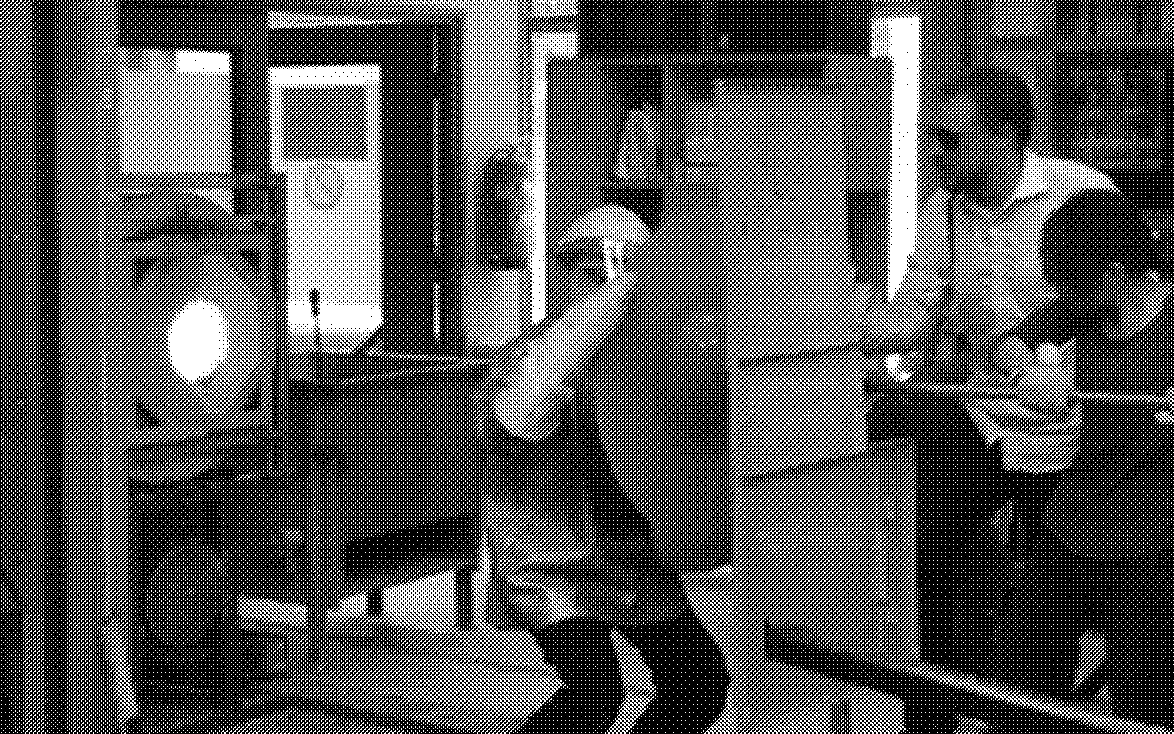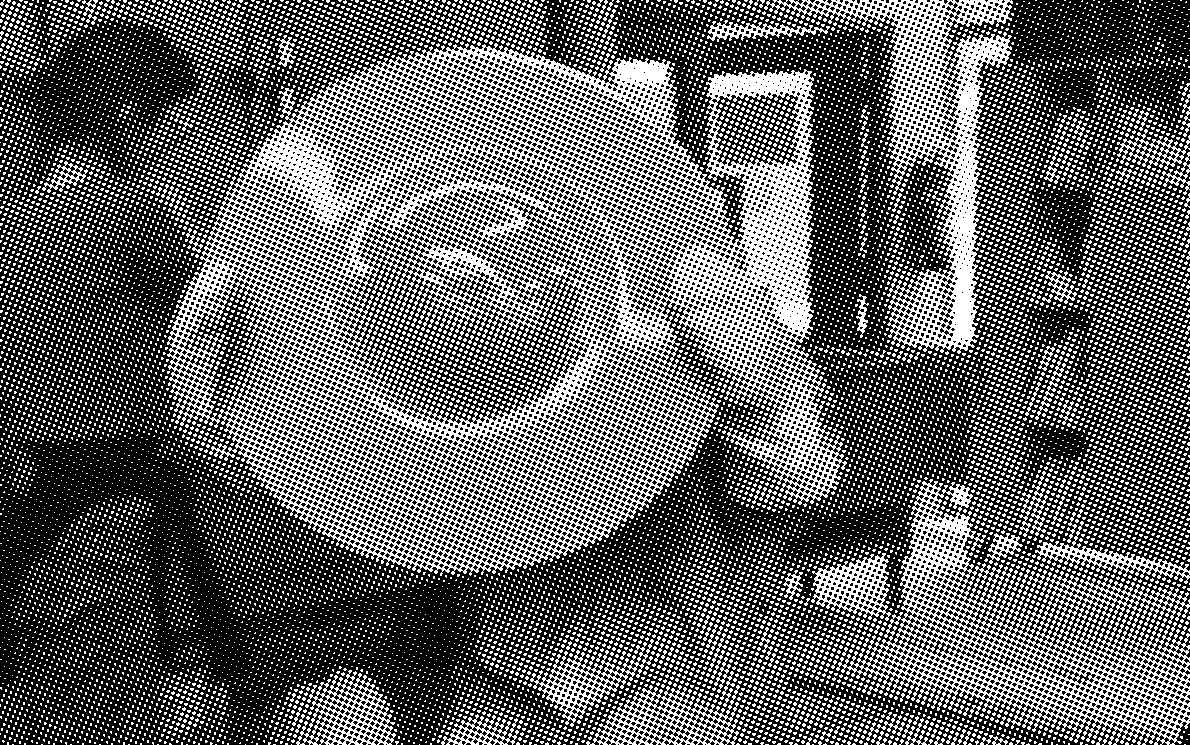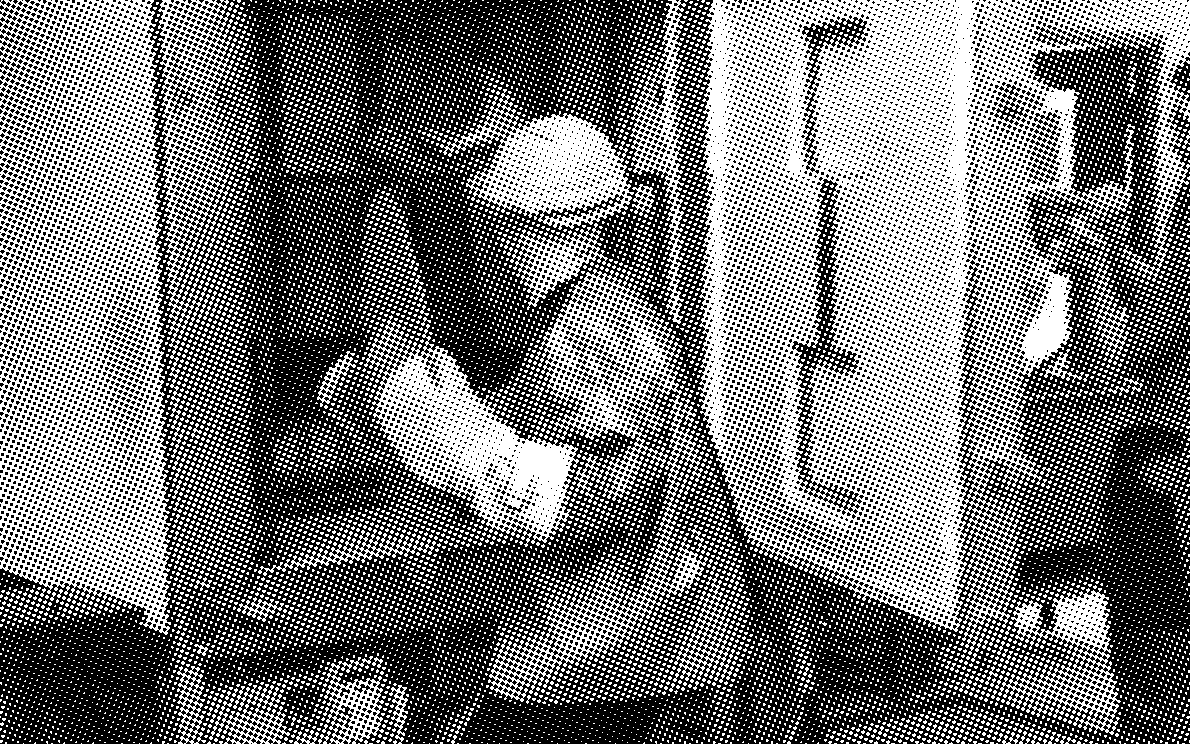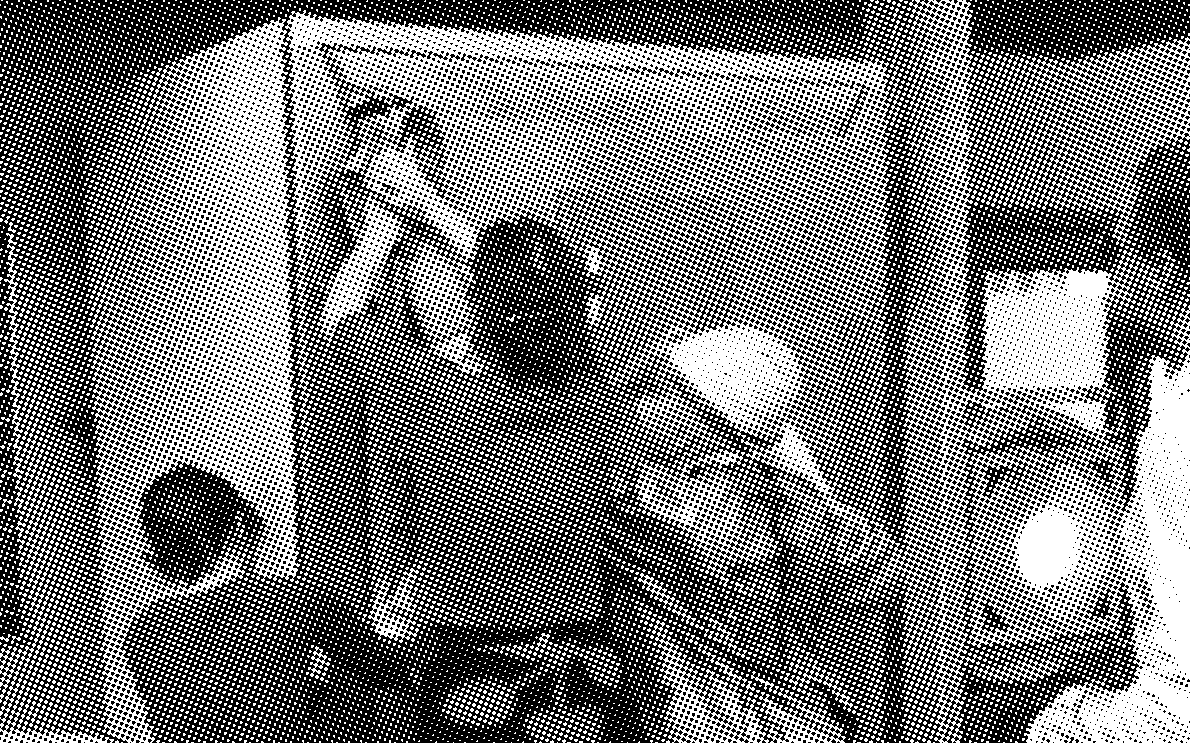Koen Brams
Art and Craft
In 1969 the American artist Sol LeWitt published the following celebrated statement: ŌĆ£Ideas alone can be works of art; they are in a chain of development that may eventually find some form. All ideas need not be made physical.ŌĆØ It would be difficult to overestimate the impact of the paradigm shift signaled by this ŌĆ£sentence on Conceptual Art.ŌĆØ1 The claim that an idea can in itself be art and that that idea doesnŌĆÖt even need to be enacted to be considered art, must be regarded as revolutionaryŌĆöas groundbreaking as the discovery of perspective. After LeWitt launched this sentence upon the world, art changed fundamentally.
The innovative ideas of Sol LeWitt and his colleaguesŌĆöamong them Lawrence Weiner, who had published his celebrated Declaration of Intent the year beforeŌĆöhave had far-reaching consequences for the production, the exhibition, the reception, and the teaching of visual art. The notion that all an artist needs is an ideaŌĆöand that anyone can materialize that ideaŌĆöbecame the guiding principle in the organization of the art world. This idea informs the way artists work and exhibitions are curated in art galleries, museums, and exhibition spaces. The same premise dominates the gaze of people who look at art, write about art, and purchase artworks. Lastly, this idea also dictates the way art education is organized. Our academies and postgraduate institutions have become places where technical specialists (help to) execute the ideas conceived by artists. The division between concept and execution is the all-decisive factor in our approach to visual art.
Koen Brams
Art and Craft
A scene in the Glass Department at the Gerrit Rietveld Academy.
1. Thinker and Maker
The division of labor between thinker and maker may have been generally accepted, but that does not mean that it is always or everywhere greeted with enthusiasm. How often have I heard a maker complain that the thinker is a technical nincompoop or even a charlatan. ŌĆ£The artist has no idea what he wants to make,ŌĆØ is the gist. ŌĆ£He wants to screen-print that image, but if I were to do that, the colors would all run.ŌĆØ ŌĆ£She marches in here, thrusts a sketch into my hand and expects me to solve everything.ŌĆØ ŌĆ£Just who does she think she is, a great artist? Let her start by rolling up her sleeves. Unless she lends a hand, IŌĆÖm damned if IŌĆÖm going to work myself into a sweat.ŌĆØ ŌĆ£I spent hours sanding that piece and he takes all the credit, when all he did was drop by with an idea.ŌĆØ ŌĆ£He waltzed in here and do you know what he said when he saw the finished artwork? CanŌĆÖt you make it bigger? ThatŌĆÖs what he said.ŌĆØ ŌĆ£Sir knocks on my door, hands me a piece of paper and asks if it can be ready tomorrow. Why not yesterday?ŌĆØ ŌĆ£I spent weeks turning out lithos. Not a word of thanks. Yesterday I saw them hanging in a gallery for 1,000 euros apiece. For work that I did, heŌĆÖs pocketing a fabulous sum of money.ŌĆØ ThatŌĆÖs just a random selection of comments I overheard in the technical workshops of the Jan van Eyck Academy, a postgraduate institute for research and production, of which I was director from 2000 to 2011. In other institutes where I was a guest, I heard similar remarks.
The thinkers were just as ready to vent their frustration. For example, I heard one artist say that the maker was being completely uncooperative. ŌĆ£He knows perfectly well how that machine works but he wonŌĆÖt share his know-how.ŌĆØ ŌĆ£SheŌĆÖs a failed artist and her frustration gets in the way of the technical guidance.ŌĆØ ŌĆ£The workshop is always deserted. What does the technical supervisor actually do?ŌĆØ ŌĆ£Why is there never a hint of a smile when I ask for technical information?ŌĆØ ŌĆ£Why couldnŌĆÖt she have said that what I had in mind is technically unfeasible?ŌĆØ
Clearly, both the thinker and the maker sometimes loathe one another. However clich├®d some of the remarks may sound, below the surface of that routine grumbling lurks a genuine power struggle that is unquestionably connected with the hierarchical nature of the division of roles between artist and technician. It is the artist who provides the ideas. Without him or her the technical specialist would be out of a job. But if the artist behaves in a haughty or disrespectful way, the technician may decide to keep their knowledge and expertise to themselves. If that happens the artwork remains stuck in the design phase. So the technician also has power, power that can be used or abused. In fact, artist and technician are condemned to cooperate, even if they donŌĆÖt always recognize the truth of that, witness the snide remarks that are sometimes traded back and forth.
Does that mean that we should abolish the distinction between artist and technician, between thinker and maker? Should we take the complaints seriously and return to the situation before any such distinction existed? Some reactionary forces no doubt dream of such a reversion. I do not belong to that category. We can no more plead for a return to the days before the discovery of perspective!
Instead of erasing the distinction between artist and technician, between thinker and maker, we can ascertain more precisely what both actors actually do, where their strengths lie, and what qualities their work entails. I shall attempt to do that here and now, beginning with the technician, the maker, the craftsperson.
Koen Brams
Art and Craft
2. The Craftsperson
Scarcely has the intention to examine what the work of the maker precisely entails been formulated, than the first big stumbling block appears, namely, how to talk about the actions performed by the craftsperson. How can the work of the maker be expressed in words or rendered comprehensible? Here you have the first and not the least of the problems that I also encountered repeatedly as director of the Jan van Eyck Academy. On my visits to the workshops, whenever I tried to delve more deeply into the division of roles between thinker and maker and attempted to gain a better insight into the role of the maker, of their contribution, their expertise, their labor, the conversation not infrequently stalled after a few minutes. The discussions with workshop supervisors stranded almost immediately whenever they touched on the nature of the work they did. We had long discussions about the artists they were supervising; they spoke with great warmth and pleasure about the end results, the artworks, or designs; but when it came to the process that had taken place between being given the assignment by the artist and delivering the finished product, silence was the usual response. If anything was said, it was about the machines used in the production, about interesting technical details, and about marvelous craft-based solutions. These remarks were intimately connected with the work of the workshop supervisor, yet not a word was said about the work itself. At most they mentioned that a lot of time and energy had gone into their contribution. Occasionally a technical supervisor would come up with a suggestion to set up experiments in the workshop. But how can you do that if such a test is not based on any artistic concept?
In most instances, the appreciation of the thinkers for the work of the workshop supervisor was all one might hope for: the craftsperson had delivered first-rate work. And should there be any lingering doubt, the end result removed any suggestion of mistrust. The artwork was a showpiece; the artist was pleased, the maker proudŌĆöalthough without being able to describe the precise nature of their work. The contrast with the artist was huge: they had no difficulty waxing eloquent about their brainchild. This usually concerned the idea or concept behind the artwork. The artist could speak long and passionately about the way of thinking that had informed the artwork.
Why was the workshop supervisor unable to do the same with respect to their part in the production? What was the reason for their silence when the subject of their own work was broached? If that expertise could not be put into words, did it in fact exist? A completely ridiculous idea, because I only had to look at the finished artwork to satisfy myself that the workshop supervisor had made something that without their intervention would never have seen the light of day. Another explanation I briefly entertained concerned the workshop supervisorŌĆÖs articulacy. Dexterous when operating a screen printing press, ill-equipped when it came to speakingŌĆöI confess to having been guilty of that dual judgment on occasions. But how then to explain their verbal fluency on other matters? No, a lack of articulacy certainly didnŌĆÖt explain their silence on the substance of their craft. During my darkest reflections on that question, I sometimes even wondered whether it was a form of professional protectionism. If the craftsperson were to explain minutely the substance of their work, anyone could take their place. A detailed explanation of all aspects of their work would render the workshop supervisor redundant. Any initiation into their job would immediately result in the abolition of that job. But that would mean assuming that in the wake of that detailed explanationŌĆöand solely on the basis of that explanationŌĆöanyone could step into the shoes of the craftsperson. A wholly absurd notion!
My gloomiest reflections on the expertise, the knowledge, and the craft of the workshop supervisor rarely lasted very long because I was soon forced to realize that they were ridiculous. I was forced to conclude that it was simply impossible to find a replacement for the workshop supervisor. I was painfully confronted with this issue whenever one of the workshop supervisors was due to retire. In not a single instance was I able to find a successor with precisely the same abilities as the person who was on the point of leaving the institute. Such moments delivered incontrovertible proof that with the departure of the workshop supervisor concerned, a wealth of expertise, skills, and contacts would be lostŌĆöhowever efficiently and promptly the succession was handled. No, protectionism did not explain the absence of an in-depth discussion about the substance of the workshop supervisorŌĆÖs craft.
So how to explain it then? At a certain point I started to think that there was a political agenda behind the silence. If the workshop supervisor were to clarify their knowledge, skills, and contacts, that knowledge and those skills and contacts could be exploited in a way they regarded as unacceptable. This was indeed a form of self-protection, motivated not by fear that someone else might take their place, but by the desire to be able to exercise the function of workshop supervisor at their own discretionŌĆöwithout the irksome interference of others who might make use of the knowledge, skills, and contacts that had been explained to them. I never quite shook off this theory about a fear of unwanted interference as an explanation for the unsatisfactory dialogue about the substance of the technical supervisorŌĆÖs craft.
I didnŌĆÖt realize that this view was only partially or perhaps not at all correct, until after reading The Craftsman, a 2008 publication by the American sociologist Richard Sennett. In The Craftsman Sennett describes in an inimitable fashion the history of craftsmanship. One of the fascinating cases he discusses concerns the workshop of the most famous of all violin makers, Antonio Stradivari. As was customary at that time, work was divided between the masterŌĆöAntonio StradivariŌĆöand a small army of male apprentices and journeymen, among them StradivariŌĆÖs two sons. When Stradivari died in Cremona in 1737, those sons, Omobono and Franceso, took over the running of the business. Sennett has this to say: ŌĆ£They were able to trade on his name for several years, but the business eventually foundered. He had not taught [ŌĆ”] either of them how to be a genius.ŌĆØ1 None of the explanations I have given so far for the silence of the workshop supervisor is a valid explanation for AntonioŌĆÖs failure to transfer his knowledge, skills, and contacts to his two sons. Stradivari had not left his business to his sons in the expectation that they would run it into the ground. Nevertheless, he had been unable to share his knowledge, skills, and contacts sufficiently with them, with the result that the business went to the wall. Stradivari had failed to convey the essence of his craft to his sons.
Koen Brams
Art and Craft
3. Thinker and maker, revisited
The problem of the relationship between thinker and maker is not addressed by Richard Sennett. His great love is music, in particular the cello, so it is hardly surprising that he should have devoted so much attention to the story of Antonio Stradivari and his sons. The visual arts do not get much of an airing in The Craftsman. Sennett may have been aware of ŌĆ£Conceptual Art,ŌĆØ but the paradigm shift heralded by ŌĆ£Conceptual ArtŌĆØ is not referred to in his book.
While Sennett does not dwell specifically on the division between thinker and makerŌĆöa division that has become an obligatory principle in the world of visual artŌĆöit is nonetheless possible to use the book as a guide on that subject. The Craftsman is a rewarding book not just because it deals with a subject that is seldom spoken about by the practitioners themselves, but also, and above all, because of its social agendaŌĆöits author, Richard Sennett, wanted to engage in a debate about human beings and society. (For that reason, you might argue, it is puzzling that ŌĆ£Conceptual ArtŌĆØ does not feature. Sennett, like Sol LeWitt and Lawrence Weiner, is a ŌĆ£left-leaningŌĆØ thinker.)
The main focus of SennettŌĆÖs project on craft and the craftsperson is what lessons we can learn from craftsmanship and craftspeople with respect to the social sphere. His intention is to apply everything he learns in the course of his investigation of craftsmanship to society as a whole. So what does that entail? What has he learnt? I will give only a few indications, because The Craftsman is crammed with stimulating and exciting ideas. As well as talking about the intensive repetition of actionsŌĆöto which I have already referredŌĆöSennett also talks about experimentation: ŌĆ£Technique develops, then, by a dialectic between the correct way to do something and the willingness to experiment through error.ŌĆØ1 He also argues that a craftsperson can exercise self-criticism by repeating actions over and over again.2 A craftsperson can solve problems and in so doing detect other problems. In addition, Sennett stresses the importance of repair: ŌĆ£Repair is a neglected, poorly understood, but all-important aspect of technical craftsmanship.ŌĆØ3 Sennett refers to ŌĆ£the frequently noted patience of good craftsmen,ŌĆØ that in his view ŌĆ£signals a capacity to stay with frustrating workŌĆØ because ŌĆ£patience in the form of sustained concentration, [ŌĆ”] is a learned skill that can expand in time.ŌĆØ 4 He praises the importance of the sketch: ŌĆ£that is, not knowing quite what you are about when you begin. [ŌĆ”] The informal sketch is a working procedure for preventing premature closure.ŌĆØ 5 He points to the positive value that ŌĆ£the good craftsman places [ŌĆ”] on contingency and constraint.ŌĆØ And again: ŌĆ£Three basic abilities are the foundation of craftsmanship. These are the ability to localize, to question, and to open up. The first involves making a matter concrete, the second reflecting on its qualities, the third expanding its sense. [ŌĆ”] The capacity to localize names the power to specify where something important is happening.ŌĆØ 6 And so on.
The social translation of those skills is present from the earliest pages of SennettŌĆÖs book: ŌĆ£How,ŌĆØ Sennett wonders, ŌĆ£can quality of knowledge coexist with free and equal exchange in a community?ŌĆØ 7 This, it turns out, is the real agenda behind The Craftsman. In SennettŌĆÖs own words: ŌĆ£Modern society tends to emphasize differences in ability; the ŌĆśskills economyŌĆÖ constantly seeks to separate smart from stupid people. [ŌĆ”] We share in common and in roughly equal measure the raw abilities that allow us to become good craftsmen; it is the motivation and aspiration for quality that takes people along different paths in their lives.ŌĆØ 8
With these words Sennett also contributes to the debate about the relationship between thinker and maker. He not only suggests that they have equal standing, he also argues explicitly that expertise builds bridges between people: ŌĆ£the craft of making physical things provides insight into the techniques of experience that can shape our dealings with others. Both the difficulties and the possibilities of making things well apply to making human relationships.ŌĆØ 9 The patience that makers are able to summon up when using materials and machines to fashion an object, can also be applied in their relations with others. Thus, it is the maker rather than the thinker who has the skills to work on his or her relations with others, including the thinker. The maker can draw on ŌĆ£techniques of experienceŌĆØ in order to shape their dealings with others, including the thinker. The maker has the curiosity, imagination, patience, and external focus required to build enduring relationships with others, including the thinker. It is an utterly fascinating idea that could form the beginning of a totally different approach to (the work of) the craftsperson as well as to the relationship between thinker and maker.
Koen Brams
Art and Craft
Richard Sennett writes at length about the craftspersonŌĆÖs inadequate, defective or non-existing communication on the subject of their craftŌĆöin fact, SennettŌĆÖs book can be read as one of the rare attempts to lift the veil on craftsmanship, something that craftspeople themselves have insufficiently or never undertaken. What is SennettŌĆÖs explanation for the inadequate, ineffectual, or non-existent communication on the part of the craftsperson? I quote: ŌĆ£Embedding stands for a process essential to all skills, the conversion of information and practices into tacit knowledge. [ŌĆ”] When we speak of doing something ŌĆśinstinctively,ŌĆÖ we are often referring to behavior we have so routinized that we donŌĆÖt have to think about it. In learning a skill, we develop a complicated repertoire of such procedures. In the higher stages of skill there is a constant interplay between tacit knowledge and self-conscious awareness, the tacit knowledge serving as an anchor, the explicit awareness serving as critique and correction.ŌĆØ1 WeŌĆöeveryone who practices a craftŌĆöhave difficulty expressing what it is we do when practicing our skill. In the process of repeating an action over and over again and acquiring a skill, that hard-won expertise has become unconscious, and thus very difficult to describe.
It is to SennettŌĆÖs credit that he began by very carefully arriving at this diagnosis and only then attempted to get to a grip on the substance of what the professional or craftsperson does. Sennett triedŌĆöin my view successfullyŌĆöto discover and elucidate the mass of information contained in the individual of the craftsperson. The Craftsman is required reading for anyone who works in or has anything to do with the workshop. To the best of my knowledge, no one has studied the activities of a large silent majority with so much knowledge, curiosity, and passion.
-
Sol LeWitt and Peter Osborne. ŌĆ£Sol LeWittŌĆÖs sentences on
Conceptual Art: Manuscript and Draft materials 1968ŌĆō1969ŌĆØ (Verksted no. 11. Oslo: Office for Contemporary Art Norway,2009), 55. ↩ - Richard Sennet. The Craftsman (London, Penguin, 2009), 77. ↩
- Ibid. 160 ↩
- Ibid. 37-8 ↩
- Ibid. 199 ↩
- Ibid. 220 ↩
- Ibid. 262 ↩
- Ibid. 277-78 ↩
- Ibid. 26 ↩
- Ibid. 241 ↩
- Ibid. 289 ↩
- Ibid. 50. ↩
About the author
Koen Brams (BE) is an independent researcher, curator, and publicist. He is the former editor-in-chief of the magazine De Witte Raaf (1991-2000), the former director of the Jan van Eyck Academy in Maastricht (2000-2011), and the initiator of The Mobile and Temporary Studio for Research and Production (2014 ongoing). He compiled the Encyclopedia of Fictional Artists (Nijgh & Van Ditmar, 2000; Eichborn Verlag, 2003; JRP/Ringier, 2011). Recent publications: Opus 1. The ArtistŌĆÖs Beginnings (together with Ulrike Lindmayr and Dirk Pu╠łltau), Roma Publications, Amsterdam, 2015; Confusion of Tongues (together with buren [Melissa Mabesoone & Oshin Albrecht]), Posture Editions, Ghent, 2017; ├ēcran/Scherm (together with Charlotte Beaudry), ├ēditions du ca├»d, Brussel, 2017. Most recent exhibition: Jef Cornelis ŌĆō TV works /Cornelis ŌĆō Obras de Televis├Żo (1964-1997), Galeria da Culturgest, Porto, 2015; ŌĆśHave Faith in Your TimesŌĆÖ ŌĆō Karel J. Geirlandt and the Society for the Museum of Contemporary Art (1957-1960) (together with The Mobile and Temporary Studio for Research and Production), S.M.A.K., Ghent, 2018-19.



